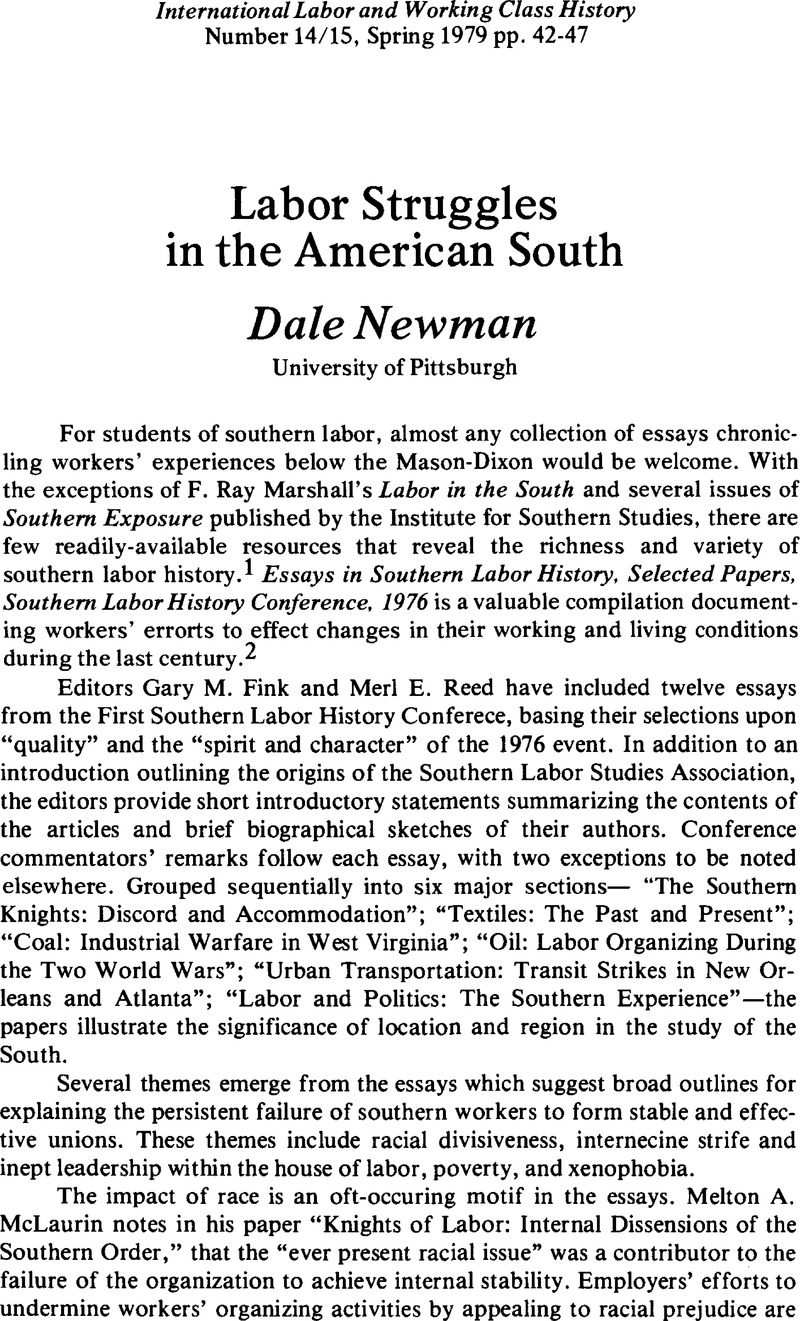Published online by Cambridge University Press: 16 December 2008

1. Marshall, F. Ray, Labor in the South (Cambridge, Mass., 1967);Google Scholar “No More Moanin': Voices of Southern Struggle,” Southern Exposure, 1:3, 1:4 (1974); “Facing South,” ibid., 3:4 (1976); “Here Come a Wind': Labor on the Move,” ibid., 4:1, 4:2 (1977).
2. Essays in Southern Labor History. Selected Papers, Southern Labor History Conference, 1976, edited by Fink, Gary M. and Reed, Merl E. (Westport, Conn.: Greenwood Press, 1977).Google Scholar
3. Thompson, Holland argues in The New South: A Chronicle of Social and Industrial Evolution (New Haven, 1920)Google Scholar, that West Virginia was “certainly not Southern, socially, politically, or economically.”
4. Cf., Dix, Keith, Work Relations in the Coal Industry: the Hand-Loading Era, 1880–1930 (Morgantown, W. Va., 1977).Google Scholar
5. Goodrich, Carter L., The Miner's Freedom: A Study of the Working Life in a Changing Industry (Boston, 1926), 58.Google Scholar
6. A third essay also dealt with textiles: John E. Allen, “Eugene Talmadge and the Great Textile Strike in Georgia, September, 1934.” Although Allen provides interesting data, he fails to reveal why Talmadge's support in the mill areas was so strong.
7. Newman, Dale, “Work and Community Life in a Southern Textile Town,” Labor History 19 (Spring, 1978), 210–11.CrossRefGoogle Scholar
8. “Family Budgets of Typical Cotton-mill Workers,” Report on Condition of Women and Child Wage-Earners in the United States, U.S. Senate Doc. 645, 61st Cong., 2nd sess. (Washington, 1911).
9. Jolley, Harley E., “The Labor Movement in North Carolina, 1880–1922,” North Carolina Historical Review 30 (07, 1953), 372.Google Scholar
10. Trepp, Jean Carol, “Union-Management Co-operation and the Southern Organizing Campaign,” Journal of Political Economy 41 (10, 1933), 612CrossRefGoogle Scholar; Mitchell, George Sinclair, “Organization of Labor in the South,” Annals of the American Academy of Political and Social Science 153 (01, 1931), 184.CrossRefGoogle Scholar
11. U.S. Senate Committee on Manufactures, Working Conditions of the Textile Industry in North Carolina, South Carolina, and Tennessee. 71st Congress, First Session (Washington, 1929), 113.
12. See Newman, “Work and Community Life.”